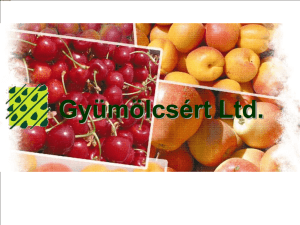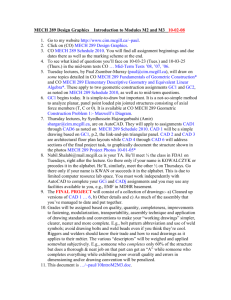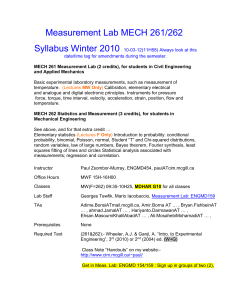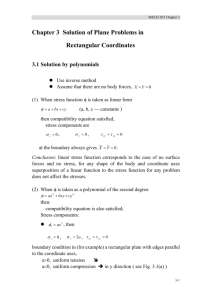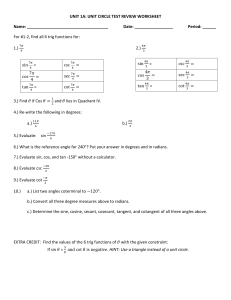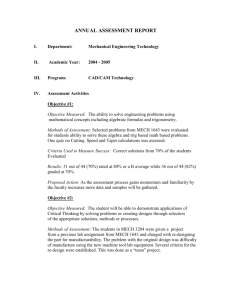Chapter 3-1
advertisement
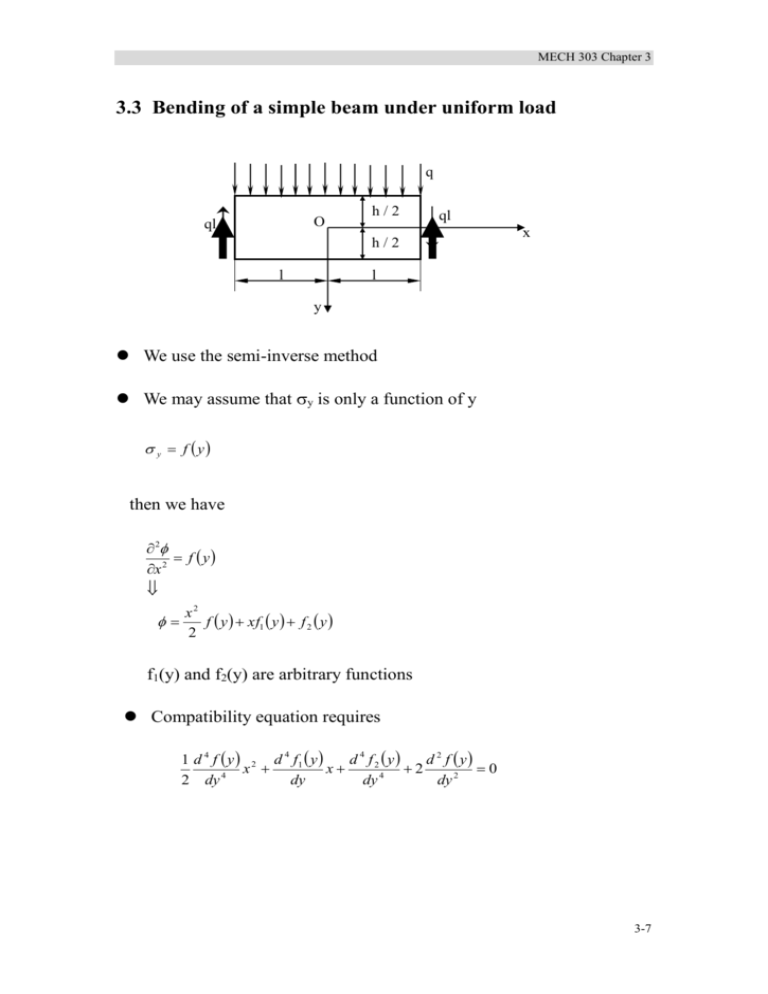
MECH 303 Chapter 3 3.3 Bending of a simple beam under uniform load q O ql h/2 ql h/2 l x l y We use the semi-inverse method We may assume that y is only a function of y y f y then we have 2 f y x 2 x2 f y xf1 y f 2 y 2 f1(y) and f2(y) are arbitrary functions Compatibility equation requires d 4 f 2 y 1 d 4 f y 2 d 4 f1 y d 2 f y x x 2 0 2 dy 4 dy dy 4 dy 2 3-7 MECH 303 Chapter 3 which leads to: d 4 f1 y 0 dy 4 d 4 f y 0, dy 4 d 4 f 2 y d 2 f y 2 0, dy 4 dy 2 We have f y Ay 3 By 2 Cy D , f1 y Ey 3 Fy 2 Gy. f 2 y A 10 y5 B 6 y 4 Hy 3 Ky 2 . The becomes x2 A 5 B 4 Ay 3 By 2 Cy D x Ey 3 Fy 2 Gy y y Hy 3 Ky 2 2 10 6 Stress components will be: x2 x 6 Ay 2 B x6 Ey 2 F 2ay 3 2 By 2 6 Hy 2 K , 2 y Ay 3 By 2 Cy D , xy x3Ay 2 2By C 3Ey 2 2Fy G 9 constants must be determined by boundary conditions. From the condition of symmetry: E=F=G=0. There are 6 constants left. Boundary conditions on the horizontal sides: 3-8 MECH 303 Chapter 3 y y h 2 0, y y h 2 q , xy y h 2 0 can determine the constants A. B. C. D: A 2q , h3 C B=0, 3q , 2h D q 2 Boundary conditions on the end surfaces: h 2 x x l dy 0 , h 2 h 2 x x l ydy 0 h 2 H ql 2 q , K=0. 3 10h h The resultant of xy must be an upward force equal to ql: h 2 xy x l dy ql (satisfied) h 2 Finally we have the solution of the problem: 3-9 MECH 303 Chapter 3 6q 2 y y2 3 2 4 2 l x y q x 3 h h 5 h 2 q y 2 y y 1 1 2 h h 6q h 2 xy 3 x y 2 h 4 compared with the solution in mechanics of materials (MECH101): x 6q 2 l x2 y h3 y 0 xy 6q h 2 x y 2 3 h 4 The obtained solution here is exact only if at the ends ( x l ) there are normal forces and shearing forces according to : X x x l y y2 3 q 4 2 h h 5 Y xy x l 6ql h 2 3 y 2 h 4 3-10 MECH 303 Chapter 3 3.4 Triangular gravity wall (dam or retaining wall) The density of wall material : weight (unit) : g The density of liquid : unit weight : g If the height of the wall is considered infinite. (1) The stress is produced by – gravity, proportional to g - pressure, proportional to g (2) Dimensional analysis of stress components ([force] / [length]2) dimension of g is [force] / [length]3 dimension of g is [force] / [length]3 dimension of x, y is [length] , dimensionless (3) If the stress components can be expressed in the form of polynomials, they must be combinations of expressions in the form of A gx ,B gy ,C gx, Dgy, where A.B.C.D. are dimensionless numbers depending upon only only. It can be seen that the stress function must be a polynomial of the third degree, i.e. , ax 3 bx 2 y cxy 2 ey 3 (already satisfies the compatibility condition) Body force X 0 , Y g 3-11 MECH 303 Chapter 3 2 x 2 Xx 2cx 6ey y 2 y 2 Yy 6ax 2by gy x 2 xy 2bx 2cy xy The 4 constants are determined by the boundary conditions: On the vertical surface x 0 , x x 0 gy , xy x 0 0 e g 6 , c=0 On the inclined surface x y tan , l x x y tan m xy m y x y tan l xy x y tan 0 x y tan 0 ( l cos , m sin ) b g 2 cot 2 , a g 6 cot g 3 cot 3 Finally, the stress solution of the problem is x gy 3 2 y ( g cot 2g cot ) x (g cot g ) y 2 xy yx gx cot The above results are only exact when the height of the dam is infinite. For a finite height dam, the stress distribution near the foundation is approximate. ( Saint-Venant’s principle) 3-12 MECH 303 Chapter 3 3-13

